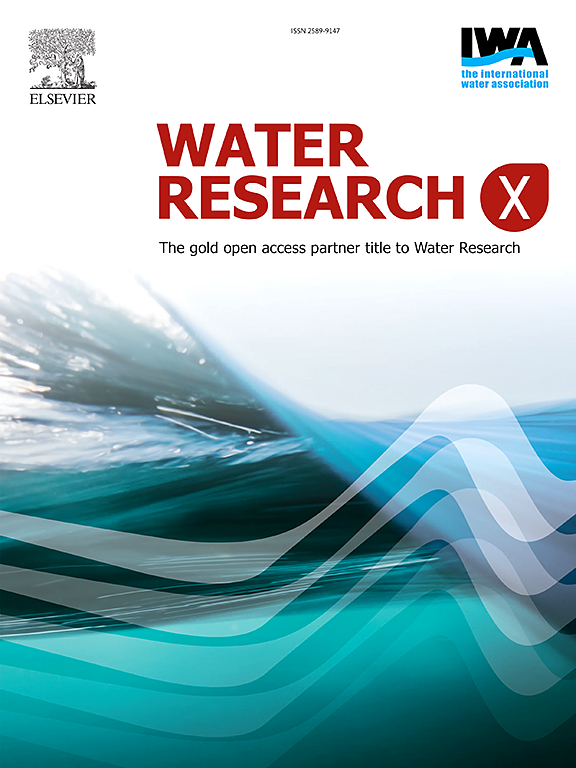How useful are data-driven methods for building-level greywater treatment from a process engineering perspective?
IF 8.2
2区 环境科学与生态学
Q1 ENGINEERING, ENVIRONMENTAL
引用次数: 0
Abstract
Data-driven methods are increasingly explored in various fields, demonstrating their potential. Compared with reviewing case-specific applications, this article critically assesses the usefulness of data-driven methods application from a process engineering perspective. Specifically, we focus on building-level greywater treatment, a highly decentralized treatment option. The application of data-driven methods in this field presents both operational constraints (e.g., lack of professional staff for maintenance) and technical challenges (e.g., highly variable influent loadings). Therefore, we review data-driven methods applied to greywater treatment processes suitable for building-level applications to explore their effectiveness. This review includes both regression and classification-based methods applied in lab- and pilot-scale studies across the following treatment processes: (i) filtration, (ii) electrocoagulation, (iii) nature-based solutions, (iv) membrane bioreactors, and (v) adsorption. We further evaluate the practical usefulness of these data-driven methods from a process engineering aspect based on their ability to meet study objectives, their motivations, and the added value they provide to process engineers. For instance, these methods aid in identifying key operational factors for treatment optimization and improving water safety by developing early-warning systems based on data-driven monitoring methods, reducing the need for chemical additives and labor-intensive laboratory analyses. However, practical applications could be hindered by ill-defined model boundaries, insufficient sampling resolution, and poor input selection. Additionally, compared with applying data-driven methods in centralized wastewater treatment plants, emphasizing model transferability (including both intra- and inter-building transferability) is necessary to enhance the scalability and practical applicability of data-driven models at the building level. This review, grounded in process engineering-based evaluation, bridges the gap between research advancements and practical needs in building-level greywater treatment, contributing to the broader application of data-driven methods in water management.

从过程工程的角度来看,数据驱动的方法对建筑级灰水处理有多有用?
数据驱动方法在各个领域得到越来越多的探索,显示出其潜力。与回顾特定案例的应用程序相比,本文从过程工程的角度批判性地评估了数据驱动方法应用程序的有用性。具体来说,我们专注于建筑级别的灰水处理,这是一种高度分散的处理选择。数据驱动方法在这一领域的应用既存在操作限制(例如,缺乏专业人员进行维护),也存在技术挑战(例如,高度可变的进水负荷)。因此,我们回顾了适用于建筑级应用的灰水处理过程的数据驱动方法,以探索其有效性。本综述包括在实验室和中试规模研究中应用的回归和基于分类的方法,涉及以下处理过程:(i)过滤,(ii)电凝,(iii)基于自然的溶液,(iv)膜生物反应器和(v)吸附。我们进一步从过程工程的角度评估这些数据驱动方法的实用性,基于它们满足研究目标的能力、它们的动机,以及它们为过程工程师提供的附加价值。例如,通过开发基于数据驱动监测方法的预警系统,这些方法有助于确定关键操作因素,以优化处理和提高水安全,减少对化学添加剂和劳动密集型实验室分析的需求。然而,实际应用可能会受到模型边界定义不清、采样分辨率不足和输入选择不良的阻碍。此外,与在集中式污水处理厂应用数据驱动方法相比,强调模型可移植性(包括楼内可移植性和楼间可移植性)对于增强数据驱动模型在建筑层面的可扩展性和实用性是必要的。本综述以工艺工程评价为基础,弥合了建筑级污水处理研究进展与实际需求之间的差距,有助于数据驱动方法在水管理中的广泛应用。
本文章由计算机程序翻译,如有差异,请以英文原文为准。
求助全文
约1分钟内获得全文
求助全文
来源期刊

Water Research X
Environmental Science-Water Science and Technology
CiteScore
12.30
自引率
1.30%
发文量
19
期刊介绍:
Water Research X is a sister journal of Water Research, which follows a Gold Open Access model. It focuses on publishing concise, letter-style research papers, visionary perspectives and editorials, as well as mini-reviews on emerging topics. The Journal invites contributions from researchers worldwide on various aspects of the science and technology related to the human impact on the water cycle, water quality, and its global management.
 求助内容:
求助内容: 应助结果提醒方式:
应助结果提醒方式:


